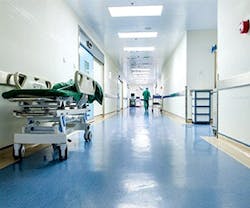How 4 Combined Heat and Power Systems Save Energy for Facilities
The EPA has recognized four facilities with the ENERGY STAR Combined Heat and Power (CHP) Award for the performance of their CHP systems.
The four facilities utilize high-efficiency CHP technology that reduces emissions of carbon dioxide and other air pollutants by capturing heat produced during the generation of electricity.
“The award winners demonstrate how CHP can save money and reduce pollution – a real win-win for the bottom line and the environment,” says Janet McCabe, Acting Assistant Administrator for EPA’s Office of Air and Radiation. “On-site power generation like CHP can also strengthen our nation’s electrical infrastructure.”
These CHP systems achieved operating efficiencies of 70-75%, considerably higher than the separate production of electricity and thermal energy, which is typically less than 50%. Moreover, they are designed with the ability to disconnect from the grid to maintain operations during a blackout or electric grid failure.
Recognized CHP systems include those that use at least 10% less fuel than state-of-the-art separate heat and power generation, are affiliated with at least one EPA CHP Partner, have at least 12 months and 5,000 hours of measured operating data beginning and work within emission limits. The four honorees are:
- The Maine Army National Guard operates the Aviation Support Facility in Bangor, ME, where its CHP system includes a natural gas-fired internal combustion engine generator that produces up to 75 kW of electricity. Engine heat produces enough hot water to heat the facility’s hangar despite being located in a region with over 5,000 heating degree days.
- South Oaks Hospital, a 400-bed facility in Amityville, NY, uses five natural gas-fired internal combustion engines powering 250 kW synchronous generators. Engine heat from exhaust and cooling systems is harnessed to provide space heating and hot water for the hospital, while also powering an absorption chiller to provide air conditioning. Its system saves the hospital nearly $900,000 each year.
- The University of Maryland Upper Chesapeake Medical Center in Bel Air, MD, utilizes a CHP system that includes a 2 MW natural gas-fired internal combustion engine and a 350-ton absorption chiller. Recovered engine heat provides space heating, hot water and power for the absorption chiller. The system saves the university about $300,000 annually.
- The UMass Medical School’s Worcester campus recently added a CHP expansion with a 7.5 MW natural gas-fired combustion turbine generator. Its expanded power plant generates up to 90% of the electricity needed on campus, and it reduces the facility’s cost of energy services by approximately $3 million each year.
More information about the ENERGY STAR CHP awards can be found at www.epa.gov.
